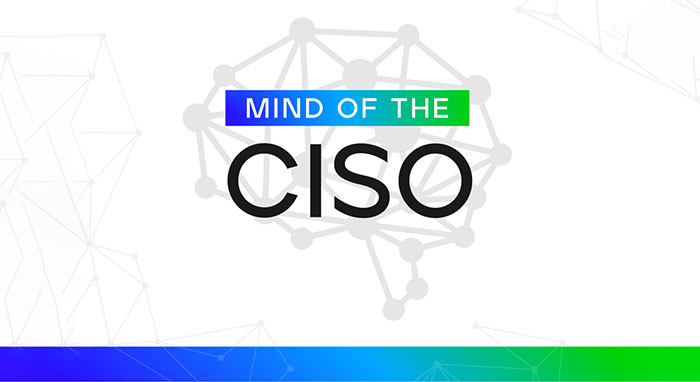Blogs
The latest cybersecurity trends, best practices, security vulnerabilities, and more

5 Reasons Why XDR Is Essential for CISOs
By Trellix · September 13, 2023
This blog was written by Harold Rivas
Extended Detection and Response, or XDR, is a term I heard years ago while serving as the CISO at other companies prior to Trellix. Back then, I considered XDR to be just a concept. I remember asking myself, “Is this for real, or just another buzzword floating around the industry?”
Instead of utilizing XDR years ago, I handled it manually by hiring teams of developers and analysts to solve my SOC challenges, ranging from threat intelligence integration, data enrichment, automatically detecting threats, investigating incidents, and responding to attacks.
Fast forward to today... after numerous customer engagements, discussions with fellow CISOs and having personally implemented an XDR platform, I have learned and witnessed myself that XDR is absolutely a real thing. It is not just an idea, concept, or buzzword. It is truly a game changer for SOCs. But there are a few things I wish I had known earlier that I believe can help others considering XDR today.
The Right Tech
Most CISOs are focused on bringing together the right solutions to fix a particular problem. According to Trellix’s 2023 Mind of the CISO report, 94% of CISOs say the right technology would save them significant time. And 81% say the right technology would help reduce their overtime hours.
When you buy more and more technologies, it can lead to siloed capabilities and challenges, such as end-to-end visibility, platform management issues, and more. You go out and search for point solutions to solve each of your problems. You spend countless hours preparing your pitch to convince the board for the funding needed to protect the business. And in the end, you’re managing a complex tech stack with 50 to 60 different technologies, and many of them don’t speak to each other.
You start asking yourself, how can my team and I be faster and more effective now that we have all these tools? And that is where the journey to XDR begins. How can you create more automation and efficiency? How does my laptop inform my firewall of a threat and indicate that a response or action is necessary?
The answer? You need a roadmap. And that roadmap leads to XDR.
Why XDR?
Many of the qualities we wish our existing point solutions offered—like better visibility, accuracy, and prioritization—are an inherent part of XDR. With the right XDR, you can, for the first time, overcome some of these longstanding challenges.
There are numerous reasons for wanting to evaluate your cybersecurity tech stack and explore XDR. I’ve pared down my top five reasons below. These were the main drivers to why Trellix implemented XDR and why I’m so passionate about this topic and want to help other CISOs up-level their SOC capabilities as well.
- Unite your plethora of disconnected tools.
- Comply with the constantly changing regulatory requirements.
- Lower your total cost of ownership.
- Boost your SecOps efficacy in mean time to detect (MTTD), investigate (MTTI), and respond (MTTR).
- Unlock the data you already own with an open platform that correlates data from other data sources in your environment, so you get more value from existing investments.
And we are seeing more and more companies choose XDR. From our 2023 Mind of the CISO report, 47% have shared they already use XDR and expect to maintain or grow it.
What to look for in an XDR solution
There are some things you should keep in mind as you evaluate XDR solutions. Your XDR should be comprehensive and open, integrating native security controls and third-party data sources, so that it fits seamlessly into your organization’s environment and gives you end-to-end visibility. You should look for the ability to contextualize and prioritize threats and enable real-time threat detection, investigation, and response. Does the solution fit your environment, whether you favor an on-premises, cloud, or hybrid approach? At Trellix, our platform is built on a threat intelligence foundation, native security controls, and more than 1,000 data integrations, with XDR acting as the brains of the entire platform.
The recently released 2023 Gartner® Market Guide for Extended Detection and Response offers an overview of the XDR market as well as practical guidance to help customers measure a vendor against expected XDR outcomes. It’s a valuable resource for untangling the XDR market. In our view, Trellix solves all the use cases Gartner mentions and is well-positioned to solve your needs. Check out the report and learn more about Trellix XDR.
RECENT NEWS
-
Jun 17, 2025
Trellix Accelerates Organizational Cyber Resilience with Deepened AWS Integrations
-
Jun 10, 2025
Trellix Finds Threat Intelligence Gap Calls for Proactive Cybersecurity Strategy Implementation
-
May 12, 2025
CRN Recognizes Trellix Partner Program with 2025 Women of the Channel List
-
Apr 29, 2025
Trellix Details Surge in Cyber Activity Targeting United States, Telecom
-
Apr 29, 2025
Trellix Advances Intelligent Data Security to Combat Insider Threats and Enable Compliance
RECENT STORIES
Latest from our newsroom
Get the latest
Stay up to date with the latest cybersecurity trends, best practices, security vulnerabilities, and so much more.
Zero spam. Unsubscribe at any time.
